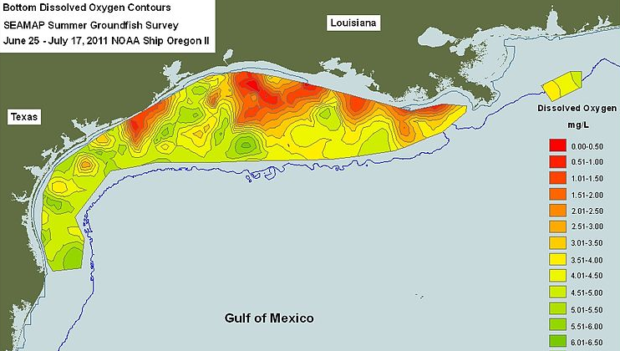Scientists report the latest data from the Upper Gulf of Mexico, and the results aren’t good.
A record-breaking, New Jersey-sized dead zone was measured by scientists in the Gulf of Mexico this week—a sign that water quality in U.S. waterways is worse than expected.
The National Oceanic and Atmospheric Administration (NOAA) announced that this summer’s dead zone is the largest ever recorded, measuring 8,776 miles. This is more expansive than the nearly 8,200 square-mile area that was forecast in July. Since monitoring began 32 years ago, the average size of the Gulf’s dead zone measured in at 5,309 square miles.
The Gulf of Mexico hypoxic or low-oxygen zone, also called a dead zone. It is an area of low to no oxygen that can kill fish and other marine life. It’s primarily caused by an excess of agricultural nutrients that flow downstream and into surface waters, stimulating harmful algae.

NOAA image
To record the new measurements and assess the severity of low oxygen levels in the Gulf, scientists from the Louisiana Universities Marine Consortium (LUMCON) embarked on their 31st mid-summer hypoxia research cruise in July. Even with reported numbers as large as they are, the team of scientists said the entire area of the dead zone couldn’t be mapped due to an insufficient number of workable days on the ship. There was more hypoxia to the west, and the measured size would have been larger if there was more time for researchers to work.
“The results from this year reflect the nitrate flux into the Gulf, which was high,” says Nancy Rabalais, a research professor at LUMCON who helped lead the cruise. “It’s a matter of addressing the sources of the nitrate—where they first start—which is in a field of agricultural crops.”






